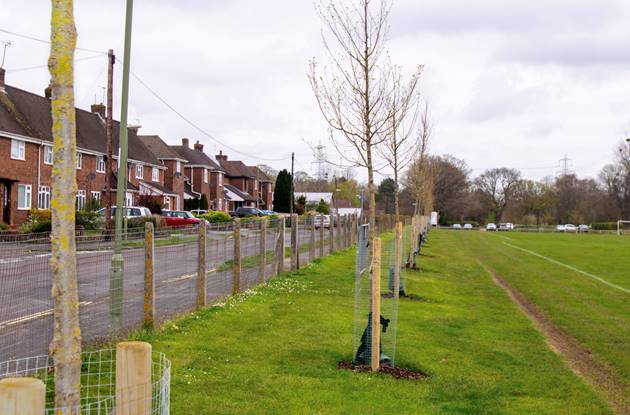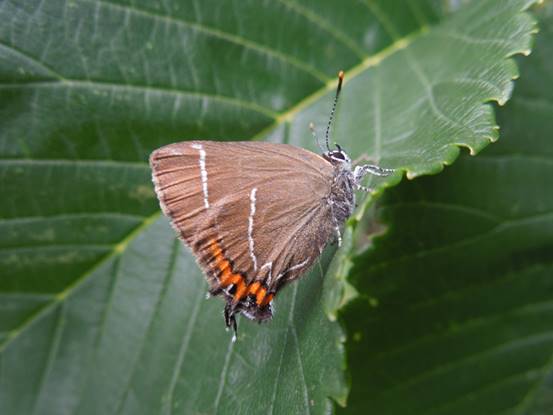Hundreds of beautiful and key trees planted across the Borough

Almost 500 trees of 14 different varieties, including disease-resistant Elms, have been planted across Eastleigh Borough as part of the Plant Eastleigh project. The work is part of the wider campaign as the Council works towards its target of 160,000 new trees in the Borough by the end of the decade.
The Council is planting the 486 3-metre trees in suburban areas, which include parks, grass verges and open public spaces, in the Aviary estate in Eastleigh and Bursledon’s Pilands Wood estate, as well as clusters in Netley and Hamble. There has been some disturbance to ground at sites to allow for the planting to take place, but relandscaping will take place as weather conditions improve.
Key areas include Fleming Park with over 90 cherry trees of six different varieties clustered into ten large clusters distributed about the park to create spectacle with flowers in spring and fiery autumn leaf colours, birds will benefit from the berries too. A Great White Cherry has been planted to mark each of the main footpaths into the park.
Nearly 30 sweet chestnut trees along Eastleigh’s Chestnut Avenue to reinforce the local avenue of existing trees past local schools and colleges – it includes half a dozen new flowering trees opposite the entrance to Barton Peveril College to provide a beautiful show of colour in spring.
Over 100 disease-resistant Elms, specially bred by Hillier Nurseries, have been planted in the Borough in a dramatic return to our part of Hampshire for this iconic English native tree which was devastated by Dutch Elm disease in the 1970’s.
Elms provide valuable habitat for the rare and enigmatic White-Letter Hairstreak butterfly (picture by Butterfly Conservation), the caterpillars of which feed exclusively on Elm. In recent years, colonies of this species have been found in urban areas on disease-resistant Elms and given that there are occasional records within Eastleigh Borough and known colonies nearby, we are hopeful that in the future they can establish on our own Elm trees.
The butterfly is named due to the strongly defined white 'W' mark across the undersides of the wings, although the adult butterflies can be hard to see as they spend a lot of time in the tree canopy. They are a priority species of the UK Biodiversity Action Plan and are listed as a species of high conservation priority by the Butterfly Conservation.
The Council’s Community Tree Rangers are asking residents for help to look after the trees, which are a range of species. They’re urging residents to become ‘Tree Carers’ and help water them during warmer months from sustainable sources such as rainwater or even bath/washing up water, to ensure they establish.
Each tree is fitted with a 70-litre reservoir to gradually water the trees through seep holes, allowing the roots to breathe. However, assistance from the public will be gratefully appreciated by the Tree Rangers to help each tree thrive.
The Urban Tree Challenge grant from the Forestry Commission was awarded to the Council . The fund includes care and maintenance costs for the trees for three years to help them in the early years of bedding in.
The tree varieties include Elm, Lime, Oak, Crabapple, Birch, Maple, Sweet Chestnut, Rowan, Whitebeam, Beech, Alder, Tulip, Scots Pine and Hawthorn.
Plant Eastleigh is our drive for residents, businesses, and community organisations to plant 160,000 more trees in Eastleigh Borough by 2030. The project contributes to the England Trees Action Plan, which the Government has launched to tackle biodiversity loss and climate change.
Visit www.planteastleigh.co.uk for more information and to be a part of Plant Eastleigh

